
Date of visit:May 29th, 2017
Weather: Cloudy
Hello, everyone! This is Narorin♪
In this Narorin Report or Naroripo, I will tell you about my visit to the facilities for radiation breeding of the Institute of Crop Science, NARO(NICS) located in Hitachi Omiya City, Ibaraki Prefecture.
Here, they are conducting research on crop improvement by inducing mutation using radiation called gamma rays to plants and crops.
Until now, disease resistant fruit varieties, flowers with new colors that has never existed before, and rice varieties that can be harvested in large quantities etc. have been achieved.
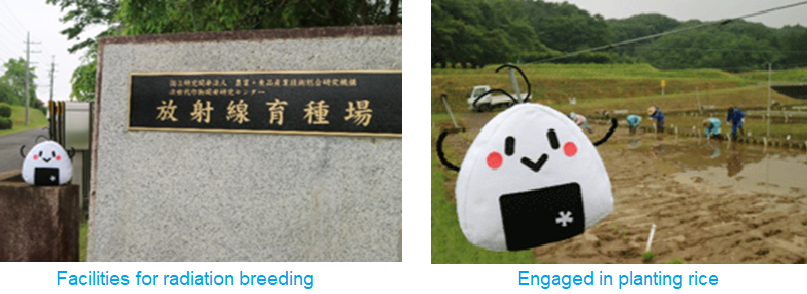
When I visited the place, everyone was engaged in planting rice.
In order to select good traits from mutated rice, they planted the rice seedlings in small separated rice fields. About one hundred different lines of seedlings are hand-planted carefully counting with 3 seedlings at a time.
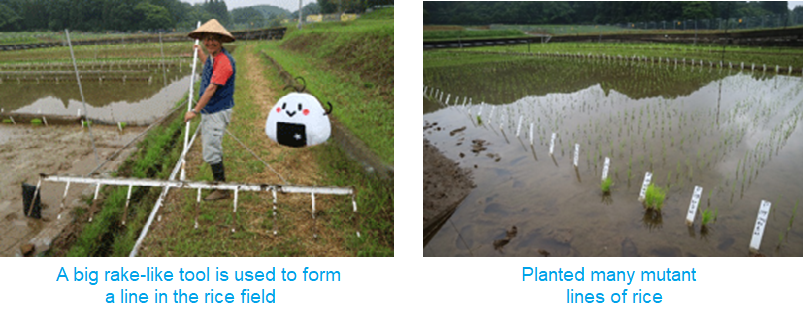
In order to get the seedlings planted in straight line at regular intervals, a big rake-like tool is used to form a line in the rice field.
A white plate stuck to the ground is used as ID for each mutant line of rice. They planted many mutant lines with a total of 7000 kinds.
Eventually, we look forward in developing a better variety of rice to be cultivated♪
I then proceeded to the "Gamma field"!
This is the only facility in the world that irradiates plants outdoors. It is also a tag as the "world's largest unique gamma field" in the "NARO Karuta" of the Gender Equality Promotion Office with Narorin!
Before entering the gamma field, I was given a pocket dosimeter. In case of emergency or accident, the dosimeter is used to check and measure the radiation level. When entering the gamma field, we are required to wear it.
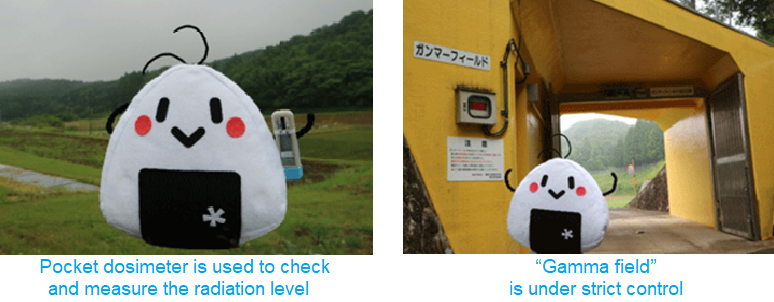
Well then, I will enter the "Gamma Field". I wonder if I may also mutate! Feeling nervous!
What! When time of irradiating, you cannot enter this field?!
I was told that the room is under strict control, and hence I am also safe.
As I passed through the yellow gate, I could see the large field with a wide variety of plants. It seems that the area is almost same size as Tokyo Dome.
I can also see a tower in the middle that emits the radiation in the field.
Apparently, apple, pear, tea, flowering plants and many more are planted in the field. Some plants are planted in collaboration with universities.
I walked up to the tower in the middle. It contains a source of radiation and it can irradiate plants in the field loosely for a long time. When it is not radiating, the radiation source is contained in a lead box to prevent any radiation leakage.
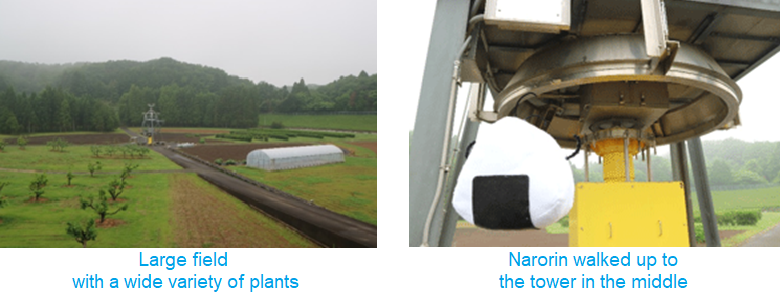
The field is surrounded by high banks, so that gamma rays were applied to the range below the height of 5 meters and the radiation did not reach further.
This the pear tree variety developed here by radiation. It is called "Gold Nijisseiki" meaning gold 20th century variety! It has strong resistance against black spot disease and it has a plate of 'discovery tree' on the branch.
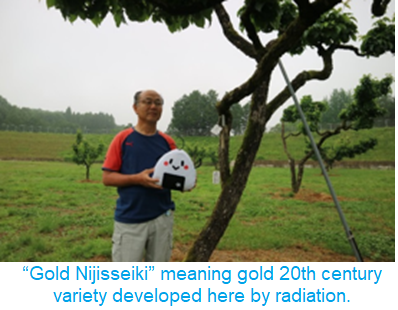
Then, I proceeded to the "Gamma Room".
It is used for indoor radiation experiments.
Seeds and bulbs of plants are placed under the source so that radiation will hit at a short distance.
After the visit is over, I checked the pocket dosimeter.
I found out it was safe!
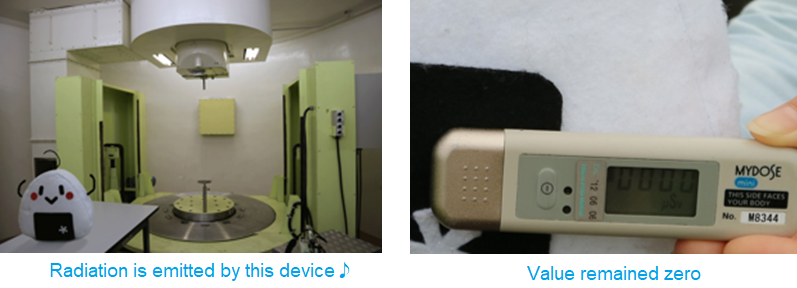
Then I had a picture with the staff who guided me in this visit.
Look! Morning glory...
The left side is the conventional species, and the refreshing light blue morning glory on the right side is a new variety developed here!
It seems that female researcher who guided me in this visit is also involved in this.
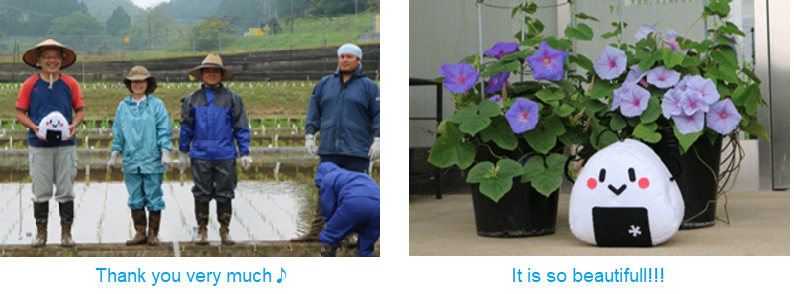
In this summer, I would like to grow morning glory too!!!
Now I'm wondering where to go next...
Check here for further details about the Institute of Crop Science, NARO.